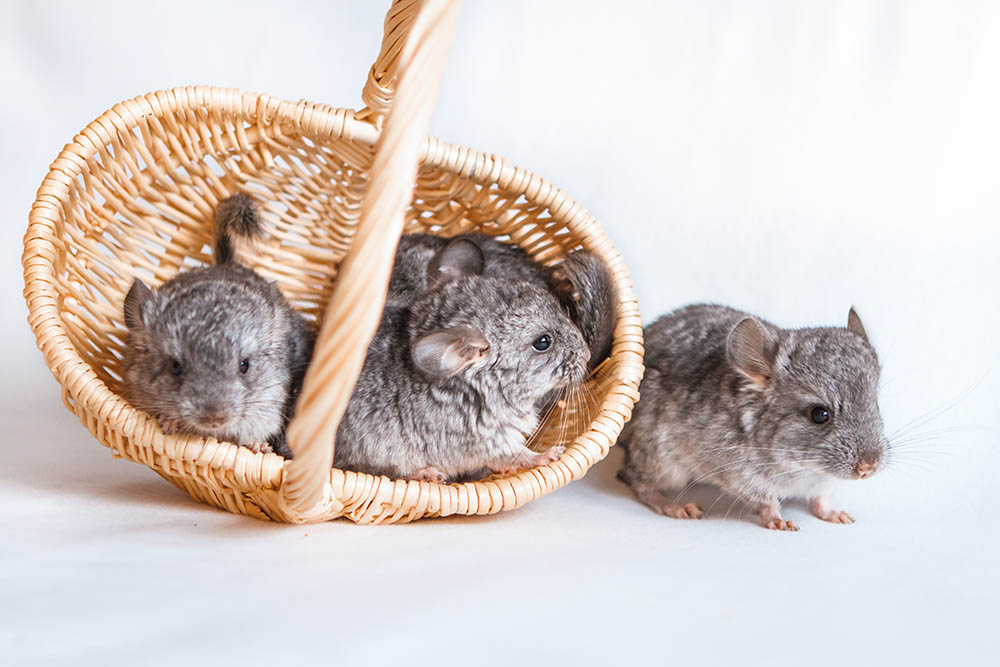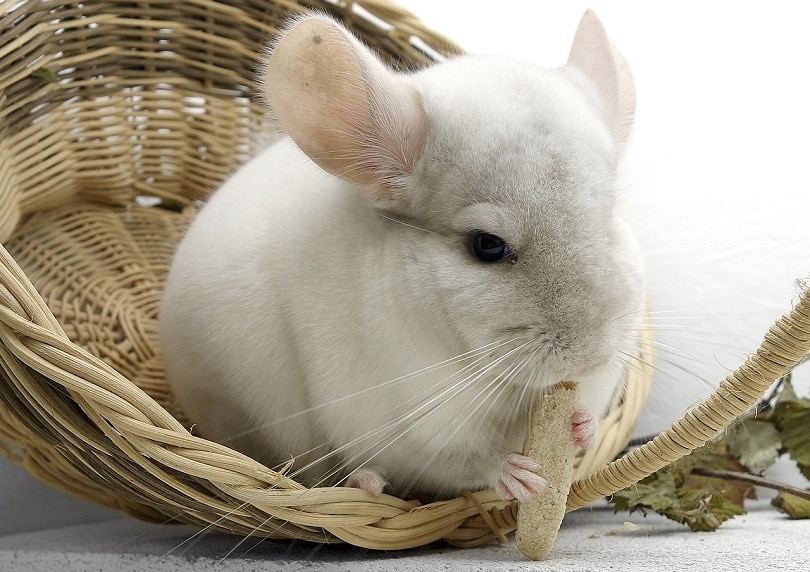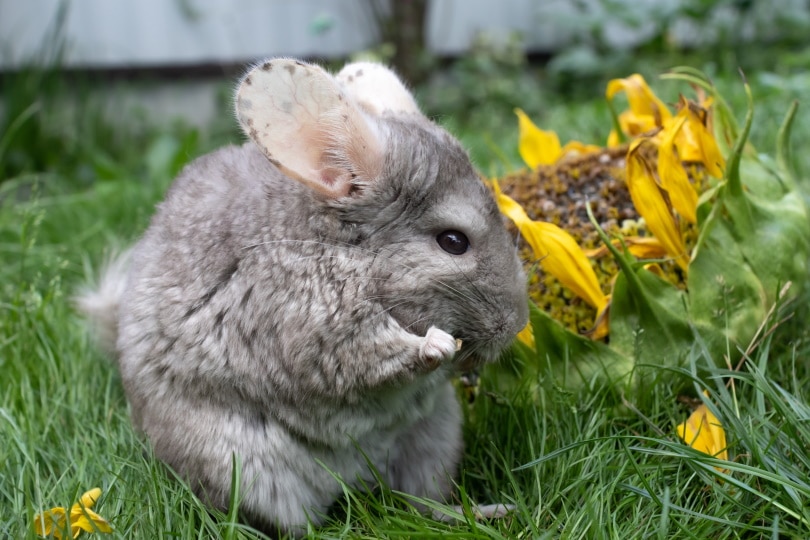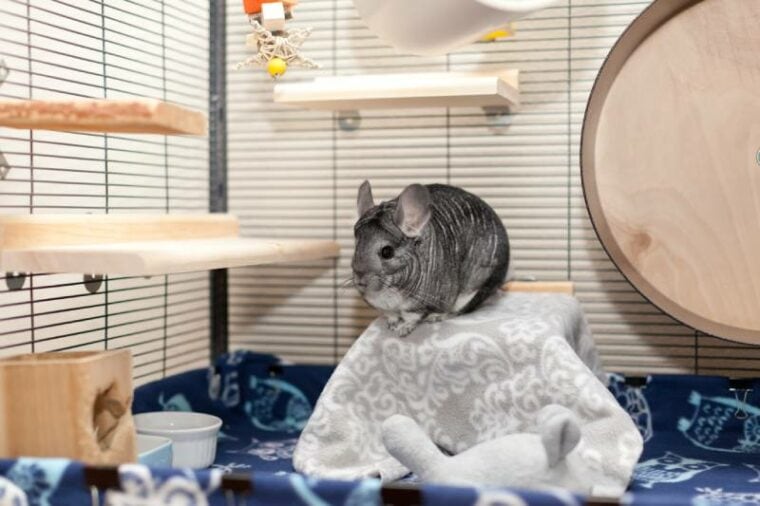
Chinchillas make adorable pets, but they’re also larger than many other pet rodents. That means they need a much larger cage than a hamster or guinea pig. Keeping a chinchilla in a cage that’s too small can easily lead to stress, which in turn can lead to other health concerns.
If you’re unsure what size cage is going to suit your chinchilla best, keep reading, and we’ll tell you how to set up the perfect cage for your furry new friend. Because chinchillas are very active animals, you should consider a cage that’s both very wide and deep (at least 3 feet wide and deep), and tall (at least 3 to 4 feet tall), with multiple ramps, perches, and platforms.
Besides the size of your chinchilla’s cage, you also need to consider the best cage placement, lighting, setup, and accessories. But don’t worry, we cover all that too!
Minimum Cage Size
For a chinchilla, the absolute minimum cage size should be at least 3 feet x 3 feet x 3 feet. Bear in mind that this is the minimum, and we’d recommend going bigger if you can afford and accommodate it, particularly when it comes to the cage’s height.
Chinchillas will benefit from a taller cage if you have room, as they can jump up to 6 feet high!
Plastic-coated wires should be avoided. Wire mesh is acceptable, but should be no more than 1 inch x 1.5 inches wide in terms of wire space. The openings on the bottom of the cage should not exceed ½ inch x ½ inch.
A wire-bottom cage will allow droppings to fall through, making cleanup easy. However, you should provide your chinchilla with a solid area to stand on should they venture to the bottom of the cage. This platform can be made of wood or hard plastic. This is important because repeated contact with a wire on the bottom of a cage can lead to sore feet.
As far as wood is concerned, safety is important. Not all types of wood are safe for chinchillas.
Once your chinchillas are settled into their new home, many owners enjoy the opportunity to allow their pets time outside of their cage. Chinchillas will enjoy being handled once they’ve been trained, but they do love to chew anything and everything, so make sure their time out of the cage is always supervised
Chinchilla Cages Need Multiple Levels
Chinchillas love to jump and climb, so it’s essential that their cage allows them to carry out this natural behavior. They can jump as high as 6 feet, so if you can accommodate a cage of that height in your house, do so! Chinchillas appreciate perches, platforms, and hiding places in their cages (in the form of caves).
They are high-energy animals when they’re awake, so they will make good use of all the different areas of their cage for eating and playing.

Cage Placement
Almost as important as the size of your chinchilla’s cage is where you place it within your home. A chinchilla’s preferred temperature range indoors is 50 to 60°F (10 to 16°C). The housing environment should be dry, free of drafts, moderately cool, and away from direct sun.
Your chinchilla’s cage should also be kept in a quiet area of the house. Chinchillas can be startled by loud noises or other pets like cats and dogs hanging around their cages.
Lighting
Chinchillas are typically more active at night, so if they’re in a room with a large amount of natural light, make sure they have a dark enclosed bed where they can curl up to sleep without being disturbed.
You may decide to leave a small light on at night, but this isn’t essential.

Accessories
You can add a variety of accessories to your chinchilla’s cage. Though many of these items add enrichment, most of them are considered mandatory, as chinchillas require a lot of stimulation and enrichment for their health.
Chinchillas love to explore new environments, so try to change the setup within your chinchilla’s cage on a monthly basis. Move the shelves around, add different hanging toys, and change the location of their hay feeder from time to time.
This will help keep your chinchilla engaged and interested in their environment.
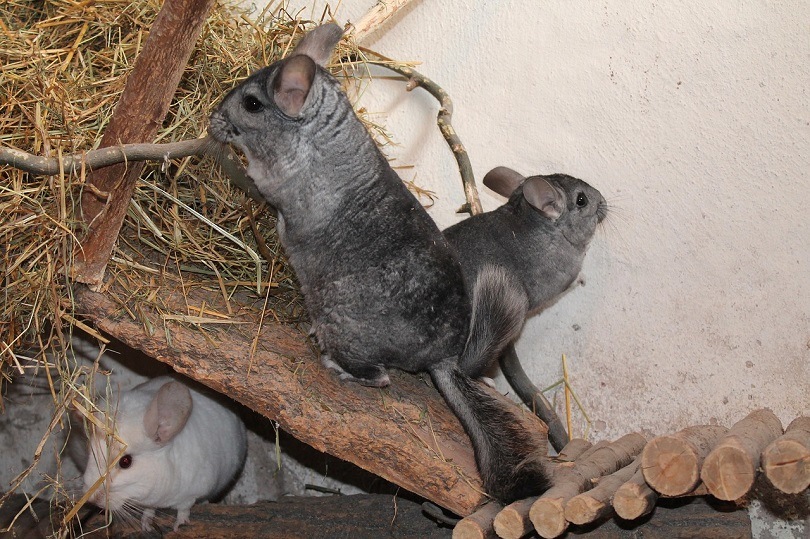
Last Thoughts
Compared to many other rodent pets, chinchillas are quite active. This means you’ll need to set aside more room for their cage than for those of other small pets. They’ll also need a good deal of space for their accessories, substrates, and toys.
The absolute minimum for a chinchilla is a cage size of 3 feet x 3 feet x 3 feet, but we recommend going for the largest sized cage that your house can accommodate. Chinchillas love to jump, so they will be far happier in a bigger cage with multiple levels for them to jump between.
Chinchillas can live for up to 15 years, so their cage is going to be an investment that keeps them happy for years to come. Additionally, chinchillas are instinctively explorative once comfortable, so keeping them in a cage that’s too small can lead to them developing stress behaviors.
Taking the time to create the perfect cage setup for your chinchilla will keep them happy. And when our pets are happy, we pet owners are happy too!
- You may also be interested in: How Much Does It Cost to Own a Chinchilla?
Featured Image Credit: kesterhu, Shutterstock



